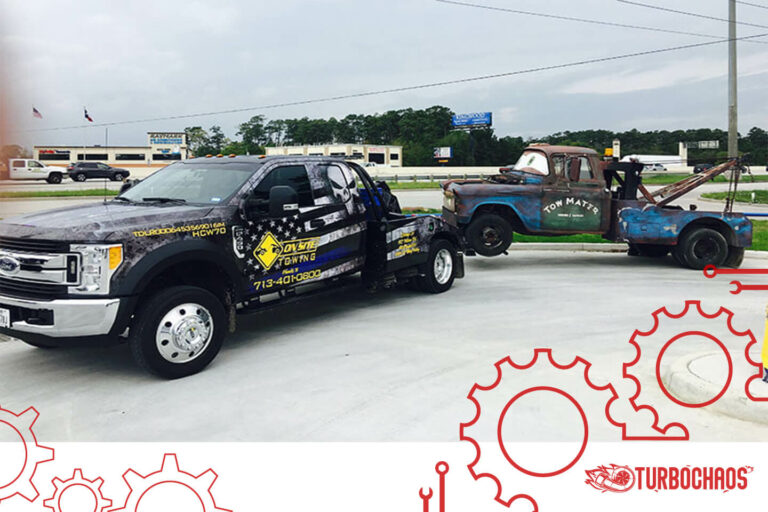What Does NBS Stand For Trucks? A Complete Breakdown
This article aims to provide information on What Does NBS Stand For Trucks? When delving into the world of trucks, one frequently encounters the term NBS. This acronym is pivotal in the automotive industry, especially concerning truck models and designations. This article comprehensively explores the significance of NBS in trucks, its impact on the automotive industry, and its relevance to truck enthusiasts and buyers.
Key Takeaways
- NBS stands for New Body Style.
- It distinguishes between different generations of truck models.
- NBS is crucial for identifying features and specifications.
- Understanding NBS helps in making informed purchasing decisions.
What Does NBS Stand For Trucks?
NBS directly translates to New Body Style. This term is commonly used in the truck industry to refer to the latest design and structural updates in truck models.

When a truck model undergoes significant changes in its design, the newer version is often referred to as the NBS model. This distinction is crucial for buyers, enthusiasts, and professionals in identifying and discussing different generations of a particular truck model.
Understanding the Evolution of Truck Models
The evolution of truck models often leads to the introduction of NBS. These changes can include updates in the vehicle’s exterior design, interior features, technological advancements, and performance enhancements. For instance, a truck model might receive a more aerodynamic body, updated interior cabin, or advanced engine technology in its NBS version.
The Importance of NBS in the Automotive Industry
In the automotive industry, the concept of NBS plays a significant role. It helps manufacturers to market their latest offerings effectively, distinguishing them from previous versions. For consumers, it simplifies the process of identifying the most current features and technologies available in a particular truck model.
The Impact of NBS on Truck Performance and Design
NBS is not just about aesthetics; it often encompasses significant improvements in performance and functionality. New body styles are typically accompanied by enhancements in engine performance, fuel efficiency, and safety features.
Performance Enhancements in NBS Trucks
With each NBS release, manufacturers aim to outperform previous models. This competition drives advancements in engine power, torque, and overall efficiency. As a result, NBS trucks often offer superior performance compared to their predecessors.
Design Innovations in NBS Models
Design innovation is a hallmark of NBS trucks. These models often feature cutting-edge exterior designs, ergonomic interiors, and advanced materials for improved durability and weight reduction. Such innovations not only enhance the truck’s appearance but also contribute to better handling and fuel efficiency.
NBS in Popular Truck Models
Several popular truck models have undergone NBS transformations. Each of these models showcases how NBS has been implemented to meet consumer demands and stay ahead in the competitive automotive market.

Case Study: NBS in Ford Trucks
Ford, a leading truck manufacturer, has utilized the NBS concept in several of its models. The transition from older to newer body styles in Ford trucks is evident in their F-Series, where significant design and performance upgrades mark the NBS versions.
Case Study: NBS in Chevrolet Trucks
Chevrolet is another major player that has embraced NBS. Their Silverado series, for example, has seen multiple NBS iterations, each bringing fresh designs and technological upgrades to the forefront.
The Role of NBS in Consumer Decision-Making
Understanding NBS is crucial for consumers in the truck market. It aids in making informed decisions based on the latest features, technologies, and design elements.
How NBS Influences Purchasing Decisions?
When considering the purchase of a truck, knowing whether a model is an NBS can significantly influence a buyer’s choice. It assures the buyer of getting a model with the most recent updates and features.
NBS and Its Impact on Vehicle Value
The NBS designation often affects the resale value of a truck. Generally, NBS models hold their value better over time due to their modern features and advancements.
The Future of NBS in the Truck Industry
The concept of NBS is constantly evolving. As technology and design trends shift, so does the definition of what constitutes an NBS truck.
Predicting Future Trends in NBS
The future of NBS in trucks is likely to focus more on sustainability, with electric and hybrid models becoming more prominent. This shift will redefine NBS in terms of environmental impact and energy efficiency.
The Ongoing Evolution of Truck Design
Truck design will continue to evolve, with NBS models leading the way in innovation. Expect to see more advanced materials, smarter technologies, and design elements that cater to a diverse range of needs and preferences.
How Do Body Style Updates Affect Truck Performance?
When it comes to truck performance, body style updates play a crucial role. These updates are not merely cosmetic changes but often involve comprehensive design overhauls that directly impact the vehicle’s efficiency, aerodynamics, and overall performance.

For instance, newer truck models with streamlined body styles tend to have improved aerodynamics, which reduces air resistance and can lead to better fuel efficiency. This is particularly important for long-haul truckers who rely on fuel economy for cost-effective operations.
Moreover, body style updates often coincide with advancements in engineering and technology. Modern trucks with updated body styles frequently come equipped with the latest in engine technology, suspension systems, and materials that are lighter yet stronger.
These improvements contribute to enhanced power, better handling, and increased payload capacities. In essence, when a truck undergoes a body style update, it’s not just an aesthetic upgrade but a comprehensive performance enhancement.
What Are the Latest Trends in Truck Body Designs?
Truck body designs are constantly evolving, influenced by technological advancements, consumer preferences, and industry demands. One of the most notable trends in recent years has been the shift towards more aerodynamic designs.
Manufacturers are focusing on reducing drag through sleeker body shapes, which translates to improved fuel efficiency and reduced emissions. This trend is not only environmentally beneficial but also economically advantageous for truck owners due to lower fuel costs.
Another emerging trend is the incorporation of lightweight materials in truck bodies. The use of high-strength steel, aluminum, and even composite materials is becoming more common.
These materials reduce the overall weight of the truck, allowing for higher payload capacities and again improving fuel efficiency. Additionally, there’s a growing emphasis on modular designs that offer more customization and flexibility for different uses.
Whether it’s for cargo hauling, towing, or specialized tasks, trucks are being designed to cater to a wide array of needs, demonstrating the industry’s adaptability and responsiveness to market demands.
How Does Truck Body Style Influence Buyer Decisions?
The body style of a truck is a significant factor influencing buyer decisions, especially in the commercial vehicle market. Buyers often look for trucks that not only meet their specific functional requirements but also represent the latest in design and innovation.

For instance, a truck with an outdated body style may be perceived as less capable or less efficient compared to a model with a more modern design. This perception impacts the resale value of the truck, making the body style an important consideration for buyers who are mindful of long-term investment value.
Additionally, the body style of a truck can affect its usability and practicality. Trucks with more ergonomic and user-friendly designs are preferred, especially in sectors where the vehicle is used extensively.
Features such as easy-access cargo beds, enhanced cabin space, and improved visibility can make a significant difference in daily operations. Thus, when manufacturers update truck body styles, they are not only enhancing the vehicle’s aesthetic appeal but also its functionality and appeal to potential buyers.
What Role Does Aerodynamics Play in Modern Truck Design?
Aerodynamics is increasingly becoming a focal point in modern truck design. The principle behind this is simple: better aerodynamics lead to reduced air resistance, which in turn improves fuel efficiency and reduces operational costs.
This is particularly crucial in the commercial trucking industry, where fuel costs constitute a significant portion of operational expenses. Modern trucks are being designed with smoother lines, curved surfaces, and integrated components that streamline airflow, minimizing drag.
Furthermore, the role of aerodynamics extends beyond fuel efficiency. It also plays a part in reducing noise pollution and improving handling and stability at higher speeds.
For example, trucks with aerodynamic designs experience less turbulence and wind noise, which contributes to a more comfortable driving experience. The importance of aerodynamics in truck design underscores the industry’s commitment to innovation, efficiency, and environmental responsibility.
What Technological Advancements Are Shaping New Truck Models?
Technological advancements are at the forefront of shaping new truck models. One of the most significant developments in recent years has been the integration of advanced driver assistance systems (ADAS).

These systems, which include features like adaptive cruise control, lane departure warnings, and automatic emergency braking, are becoming standard in new trucks. They enhance safety on the road, not just for truck drivers but for all road users.
Another technological trend is the move towards electrification. Electric trucks are gaining traction, driven by the need for sustainable and eco-friendly transportation solutions. These electric models offer the benefits of lower emissions, reduced noise pollution, and lower operating costs.
Additionally, advancements in telematics and connectivity are enabling better fleet management and operation efficiency. These technologies allow for real-time tracking, diagnostics, and data analysis, leading to optimized fleet performance and maintenance.
Conclusion
Understanding NBS in trucks is essential for anyone involved in the automotive industry. It signifies not just a change in design but a leap forward in technology and performance.
As we look to the future, NBS will undoubtedly continue to be a key factor in the evolution of truck models, shaping the industry with each new iteration.
Top FAQ’s
What are the key considerations for buyers when evaluating trucks with new body styles?
Key considerations for buyers evaluating trucks with new body styles include fuel efficiency, technological features, safety enhancements, practicality, and environmental impact. Buyers should assess how the design and features of the truck align with their specific needs, whether for commercial purposes or personal use and consider the long-term operational costs and potential resale value.
How does the transition to electric trucks fit into the concept of new body styles?
The transition to electric trucks is a significant aspect of the new body style concept. Electric trucks represent a major shift in truck design, focusing on sustainability, reduced emissions, and innovative propulsion systems. This shift is part of the broader evolution of truck design, incorporating environmental concerns and technological advancements.
How do new body styles affect the practicality and functionality of trucks?
New body styles can significantly enhance the practicality and functionality of trucks. Design changes often include more ergonomic and spacious cabins, improved cargo handling features, and enhanced visibility. These changes are aimed at making the trucks more versatile and user-friendly, catering to a wide range of commercial and personal needs.
What role does technology play in new body style trucks?
Technology plays a pivotal role in new body-style trucks. This includes advancements in engine technology, electronic systems, connectivity, and driver assistance features. Modern trucks are increasingly equipped with smart technologies for navigation, fleet management, and safety, making them more efficient and safer to operate.

Welcome to the exhilarating world of Matt Rex, a professional car racer turned renowned vehicle enthusiast. Immerse yourself in his captivating blog as he shares heart-pounding adventures, expert reviews, and valuable insights on cars, trucks, jets, and more. Fuel your passion for speed and discover the beauty of vehicles through Matt’s engaging stories and meticulous expertise. Join the ever-growing community of enthusiasts who find inspiration and expert advice in Matt Rex’s blog—a digital hub where the thrill of speed meets the pursuit of knowledge.







